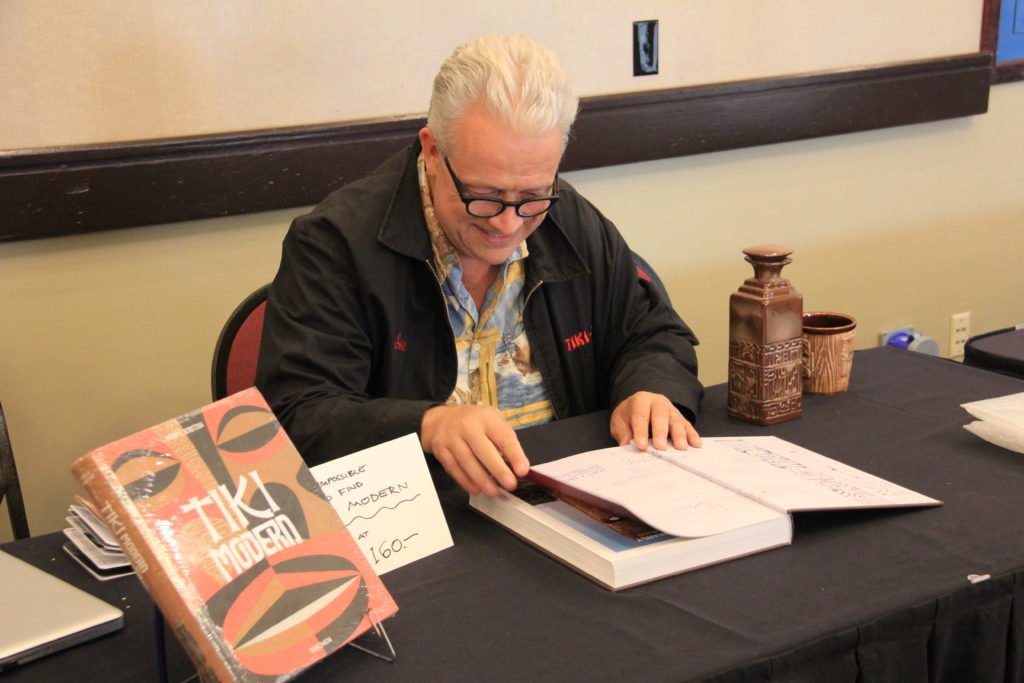
You don’t realize how small the Tiki subculture is until you start looking at how little there is written about the subject. I can count the number of books written about Tiki culture on one hand and most of these books were written by Sven Kirsten.
Sven wrote The Book Of Tiki and it’s the blueprint on what Tiki was, what Tiki is, and what Tiki should be. Sven’s The Book Of Tiki, Tiki Modern, and Tiki Pop are all standard reading if you want to learn about Tiki. Continue reading to learn about the man himself…
Paint me a picture: what was the Tiki “scene” like back in the early ’90s?
Sven– Well, the best answer to that can be found in my new book, The Art of Tiki. I have a chapter about that, plus Otto and Shag contributed as well.
In the outside world, Tiki practically did not exist and there was no Internet. When you unearthed something Tiki—a carving, a mug, or any paper ephemera—it was really precious.

There was a small band of people into it that met at my symposiums and then at Otto’s mug parties. With Otto’s Tiki News fanzine, more people came into the fold. I think the first Tiki Oasis had like 50-60 attendants? That all changed in September 2000 with the Book of Tiki.
How did your love of Tiki start?
Sven- In the early ’80s, I was living in the Hollywood Hills in an apartment (next to the Hightower apartments in which Elliott Gould, aka Phillip Marlowe resides in Robert Altman’s The Long Goodbye) and a roommate of mine brought home two Easter Island Tikis.
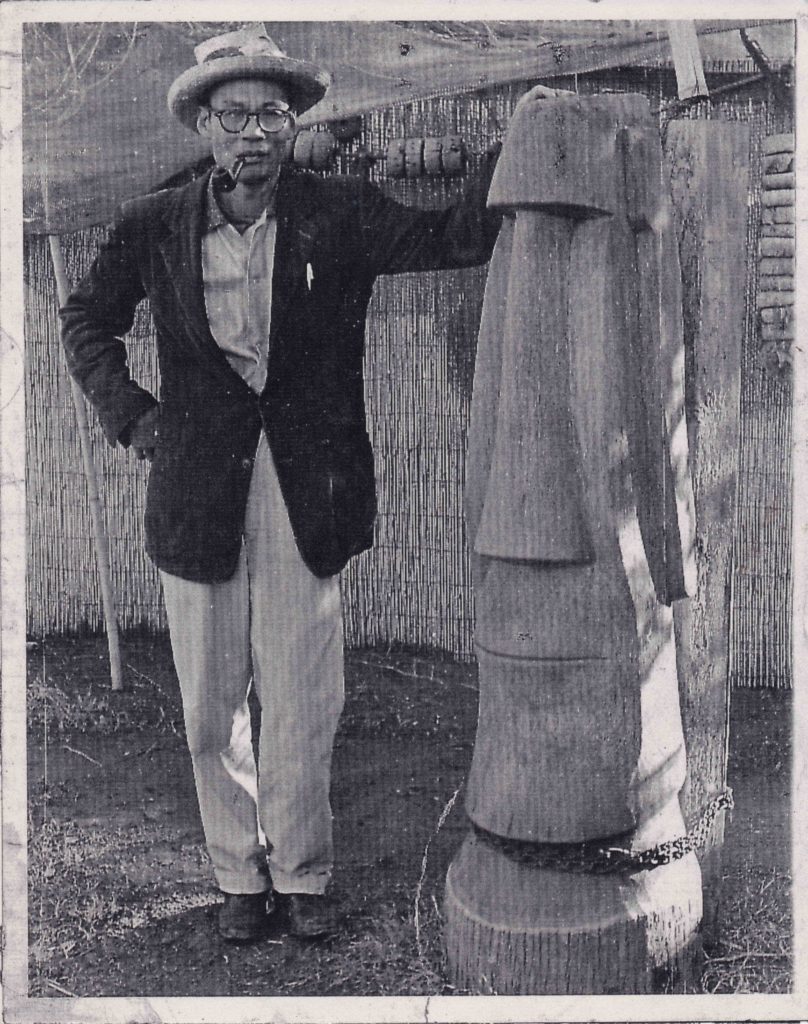
She had bought them at a marketplace at the Filipino community center directly from carver Milan Guanko. They struck me as unique, stylized pieces of sculpture and I wanted to find some for myself. The marketplace was a one-time affair, but then I discovered the Sea & Jungle shop on San Fernando road, which had several rooms full of bamboo, Tapa, and Tikis—even a black light room.
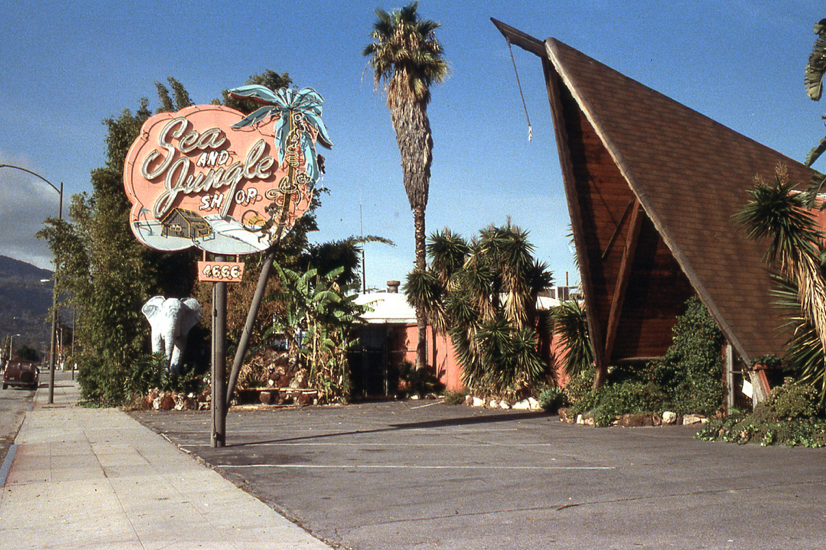
I was just coming out of film school and didn’t have much money then and only bought a Tiki Leilani mug. The third time I went back, the place had closed. That experience of loss left me even more wanting and sent me on a mission.

Can you talk about Tiki News and your involvement?
Sven- I met Jeff Berry in the early ’90s and we thought we were the only ones into Tiki until we met Otto (and Shag) at his first mug party. From then on, we pooled our talents together for small Tiki events: Otto organized the venues and artists and I gave slide presentations about Tiki sites. Not too long after, Otto had the idea for a fanzine and I contributed the first articles for it. The first one in issue #1 was called “Tiki – Who was he?” It laid the groundwork for the same-titled chapter in the Book of Tiki. Articles about Tiki TV and Tiki lamps followed.
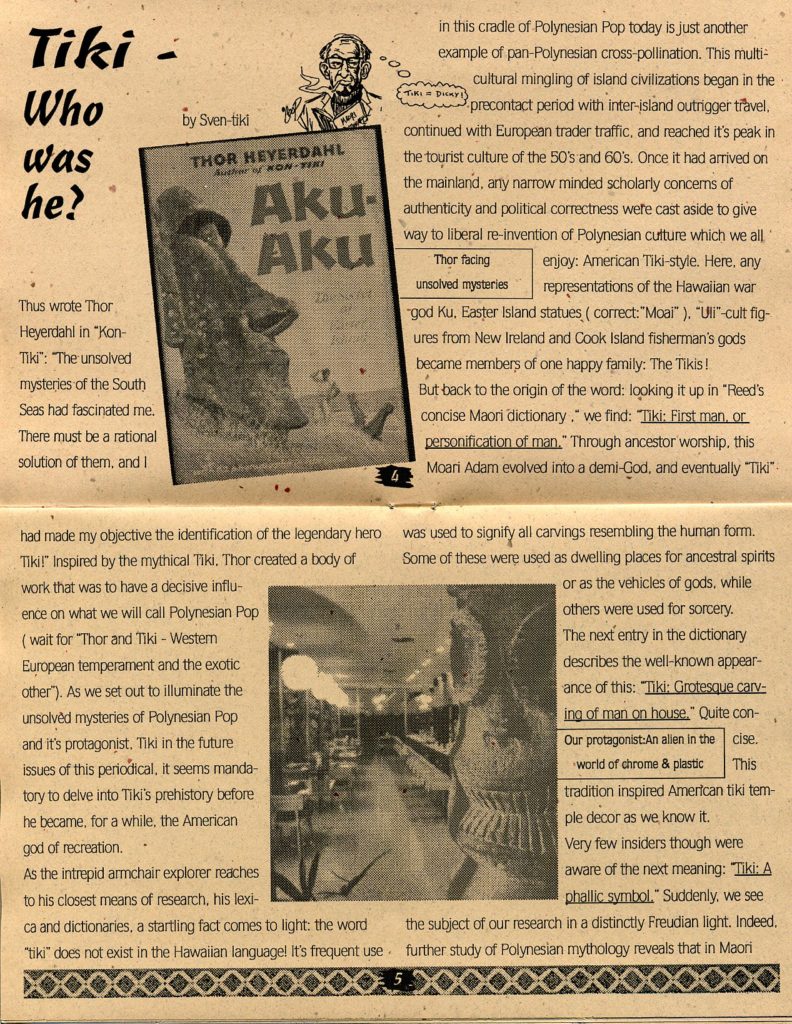
You literally wrote the book on Tiki. How did The Book Of Tiki come to be?
Sven- After searching the urban sea of LA for a tropical décor outlet like Sea & Jungle for years, I discovered Oceanic Arts in Whittier in 1989. It was my King Tut’s tomb. When Leroy showed me their collection of menus from Tiki temples they had worked on, the sheer graphic force of these images planted the thought in my head: “Someone should make a book about this!” I also began to seek out still existing sites like apartment buildings and photographed their Tikis and architecture. Three years down the line, I looked around and realized that I knew more about the subject than anybody, and since no one seemed to be doing it, I had to be the one to do the book. I put together a mock-up and sent it to publishers in the spring of 1992. It was turned down everywhere. I had no idea it would take me eight years to finally publish the Book of Tiki.
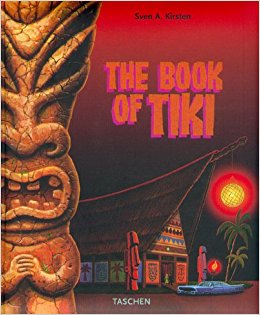
Sven, you also wrote the books Tiki Pop and Tiki Modern. Care to talk about them?
Sven- About Tiki Modern (2007):
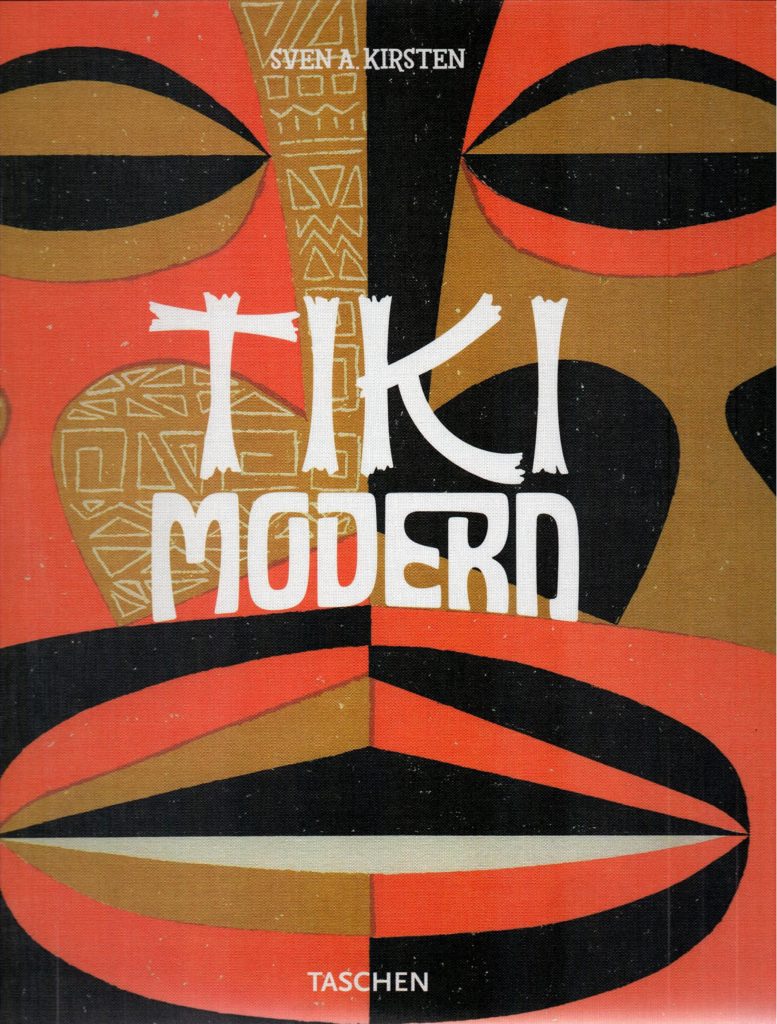
When I saw my first Witco catalog at O.A., the photos looked so outrageous, this surreal furniture with all that shag carpet, I thought it was from a contemporary music video set for someone like the Cramps. Bob and Leroy kind of laughed it off. For them, it was such inauthentic stuff. Compared to it, their wares were much more “authentic.” I could not believe normal suburbanites actually decorated their houses with that stuff. I love visual extremes, and so I announced at the end of the Book of Tiki that I would feature Witco art in my next tome. I also love Mid-Century Modernism, so that both of these opposing ends of the esthetic spectrum co-existed at the same time was a great subject to concentrate on. Again, it took me seven years to convince my publisher to put out something that weird.
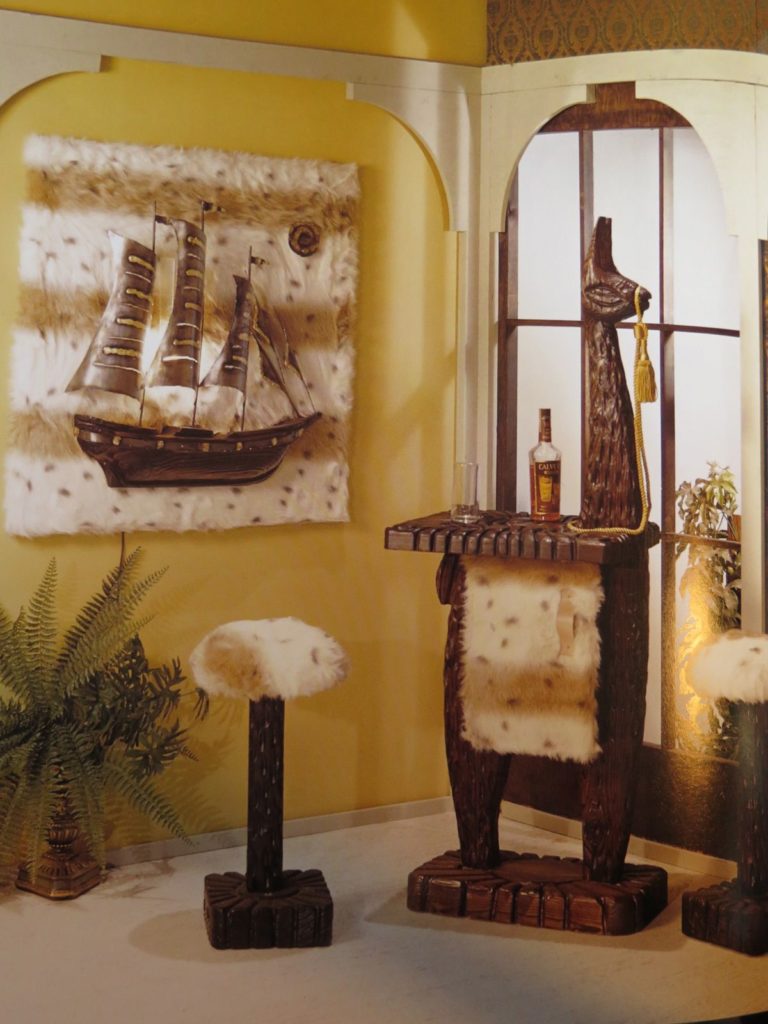
About Tiki Pop (2014):
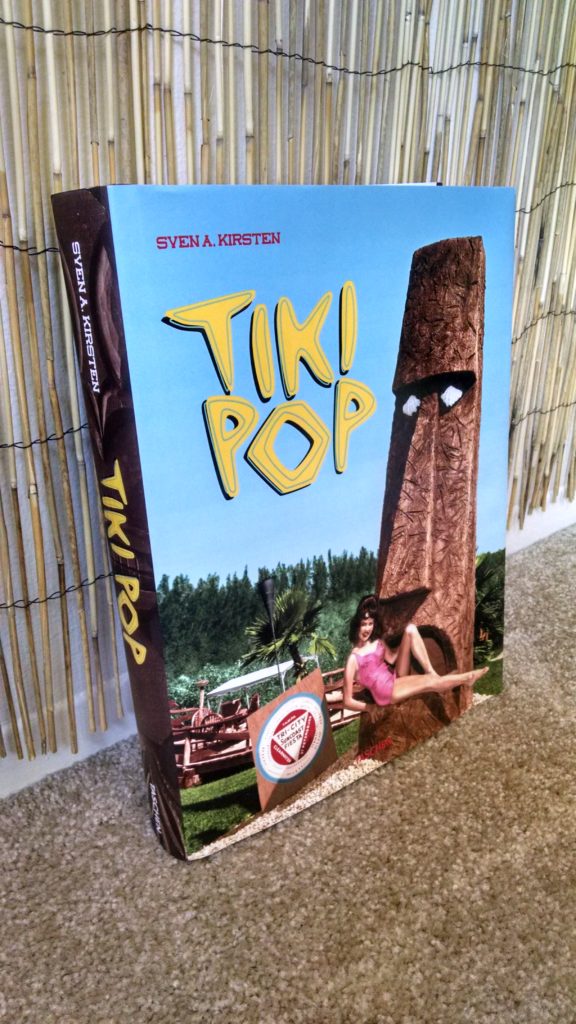
The Musee du Quai Branly in Paris is the biggest modern ethnographic museum in Europe. The director was a fan of my previous two books, so when he was giving a tour of the place to my publisher Benedikt Taschen, he asked him to see if I would be interested in doing an exhibition about American Tiki style in his museum. I had visited it half a year earlier as a regular tourist and was thrilled to find the Book of Tiki in the museum’s library, but I never dreamed that I would get to do a show at such a serious venue. These museum shows are booked years in advance, so I had four years to put Tiki Pop together as the catalog for the show. The name was requested by the director who wanted to make sure that the title Tiki POP separated the exhibition from the real Polynesian art displayed in the museum. I also knew that the French love classic Hollywood cinema, so I used the concept of the Tiki bar being basically a film set to explain the whole phenomenon to the audience.
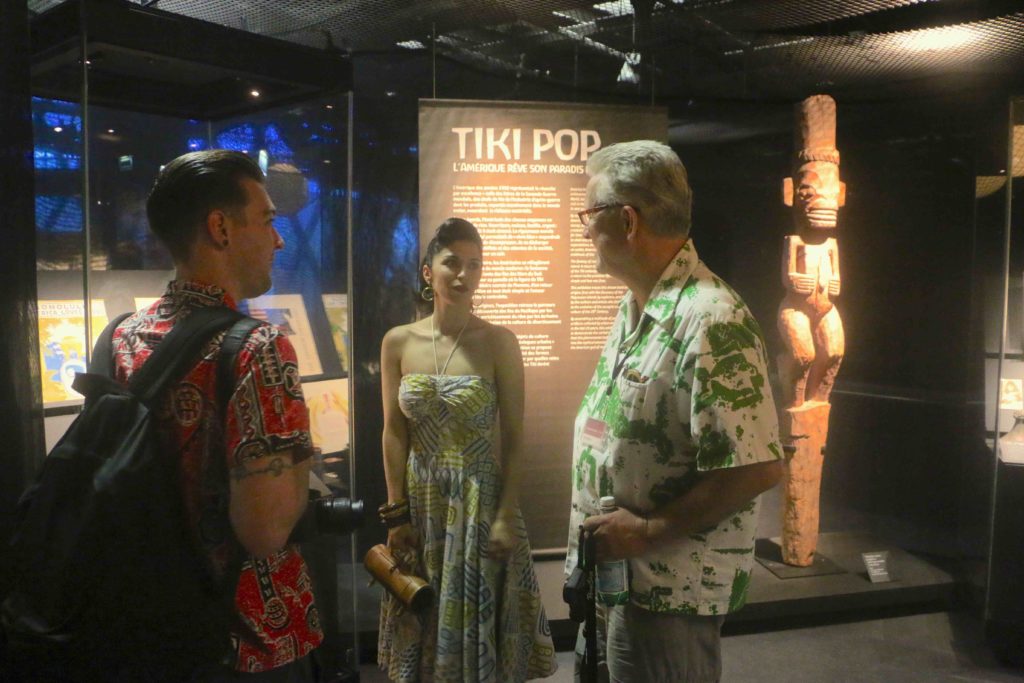
What is your favorite Tiki drink? What do you think makes the perfect cocktail?
Sven- My favorite exotic cocktail? I don’t know, it changes depending on my mood, depending on the location, depending on the ingredients. I am spoiled. I used to go over to Jeff Berry’s and taste his new discoveries. At the end, before he moved away, he had so many recipes to try out that he made flights of cocktails. My favorite commercial bar drink for a long time was the Fogcutter made by Tony Ramos at Madame Wu’s. The Tortuga made at Trader Vic’s Beverly Hills was great. Both places are gone now. Jeff and I became regulars at the Tiki Ti, and I went from Navy Grog to Rum Barrel to the Missionary’s Downfall. I never got into home mixology because I had Jeff and Ted Haigh. I was always concentrated on the art aspect of Tiki. I am actually quite pragmatic about the cocktails. They have to be good, but I don’t bitch and moan about details. The whole Internet foodie thing has begun to get on my nerves. It is simultaneously decadent and so bourgeois, the attitude of entitlement in it. The ignorance of much of the craft cocktail crowd towards the design and art of Tiki has somewhat soured me to the experience. That doesn’t mean I don’t enjoy a good cocktail, and if you buy me a drink, I won’t turn it down!
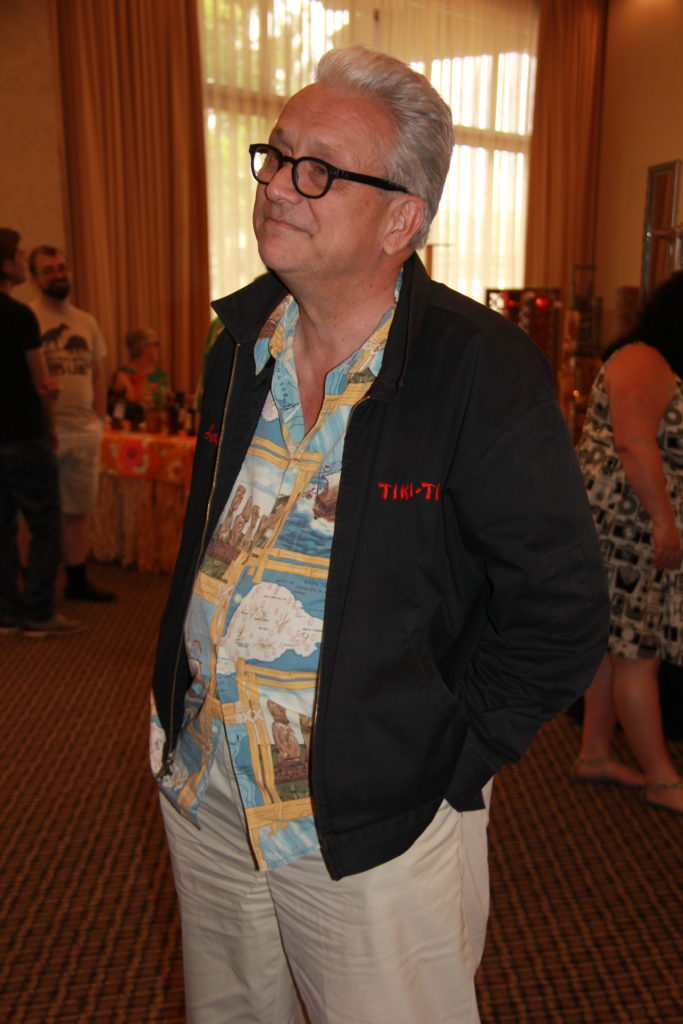
What is your favorite Tiki bar? Why?
Sven- The Tiki Ti. It was for Jeff Berry what Oceanic Arts was for me: the gateway, the “Open Sesame” to the wonders of Tiki. They continued to mix and serve their tropical cocktails in the ’80s after everybody had forgotten about how to do it, and they were doing it in the ’90s before the whole craft cocktail movement started. They opened at the peak of Tiki in 1961 and it has remained in the family as the same unpretentious neighborhood bar since. How many places like that are left nowadays? It is frequented by regular people and I am gratified I got to design their anniversary mug and their ashtray (when smoking was still allowed there).
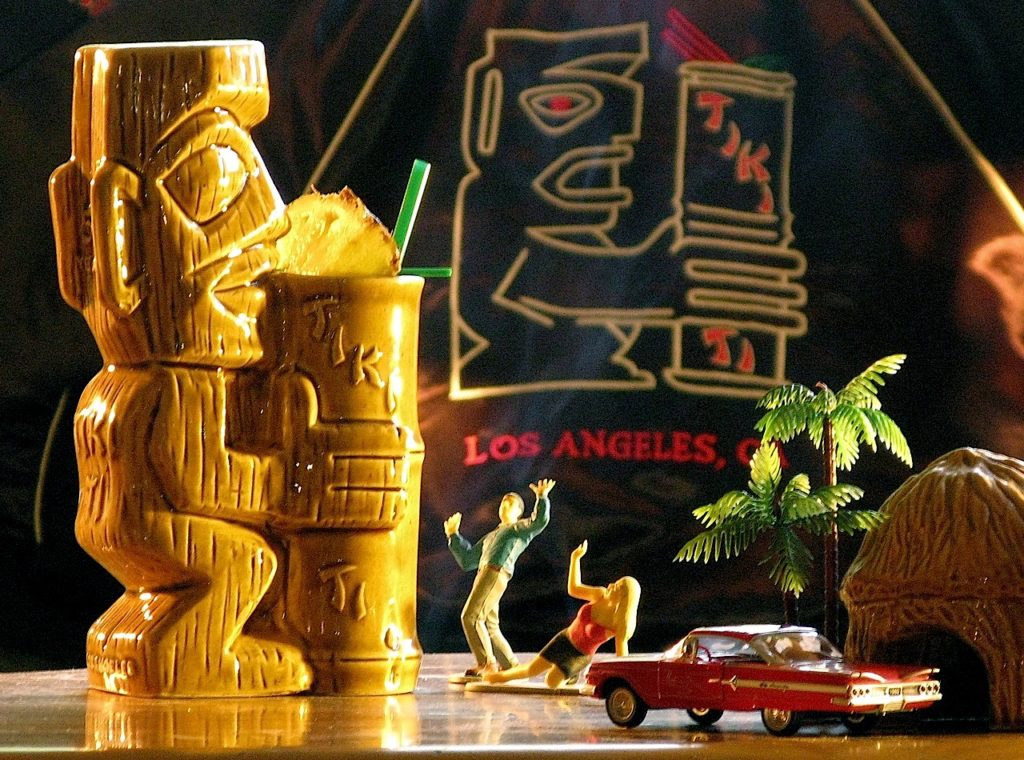
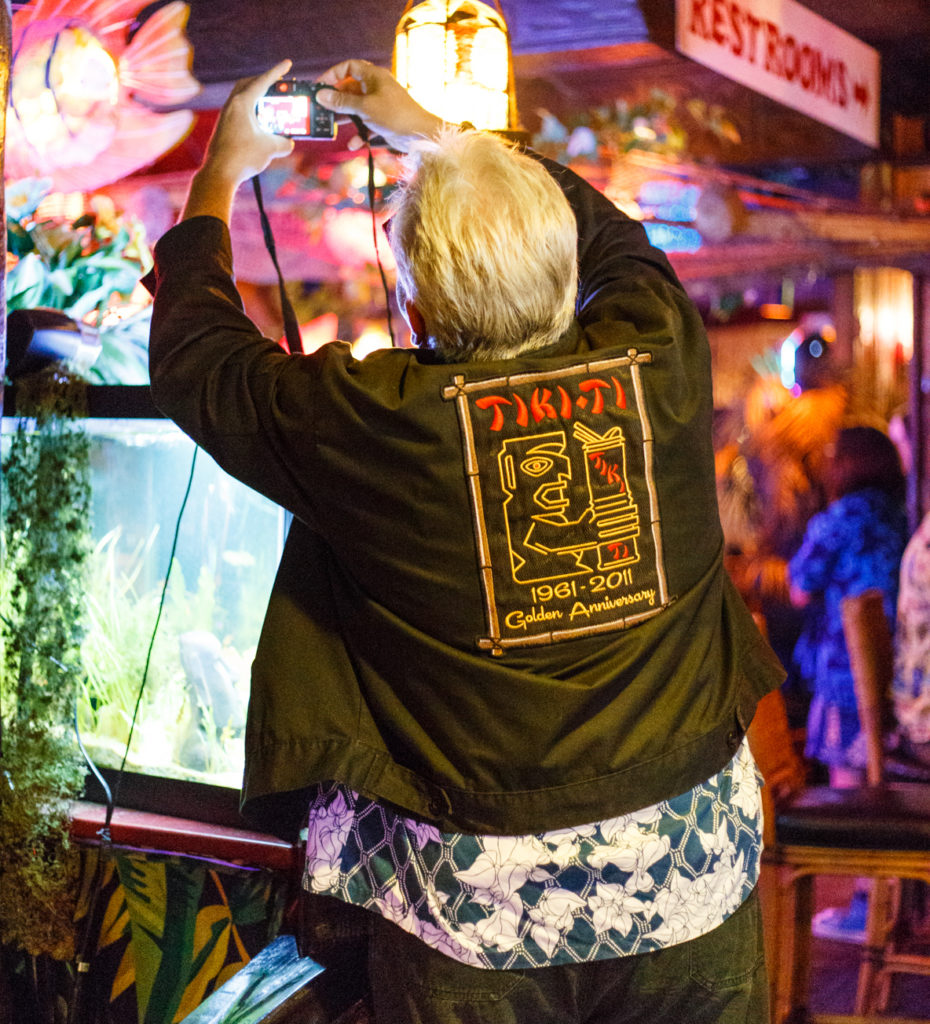
What does the future hold for you? Any new projects in the works?
Sven– In October, my next book The Art of Tiki will be published in conjunction with the 21st Anniversary Tiki Art show at La Luz Gallery in Los Angeles. It comes at a good time, when it is necessary to focus on and remind ourselves of the fact that Tiki is an art form. I had a lot of fun doing it and I got a little more personal in it.
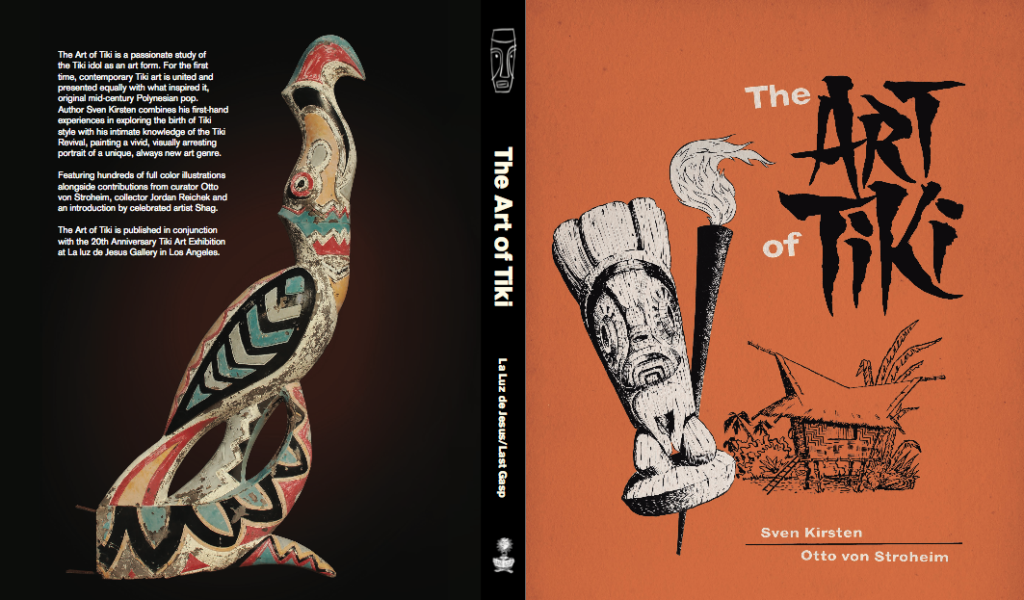
After that, I am expanding my vision to other American renditions of exotic cultures. Next year my book on Mayan Revival style will come out. It was a fantastic predecessor to Tiki in the way it used pagan imagery in architecture. I could not get it done in conjunction with my Aztec Hotel exhibition I had at the Quai Branly this year, but I will use all that material and much more in the book.
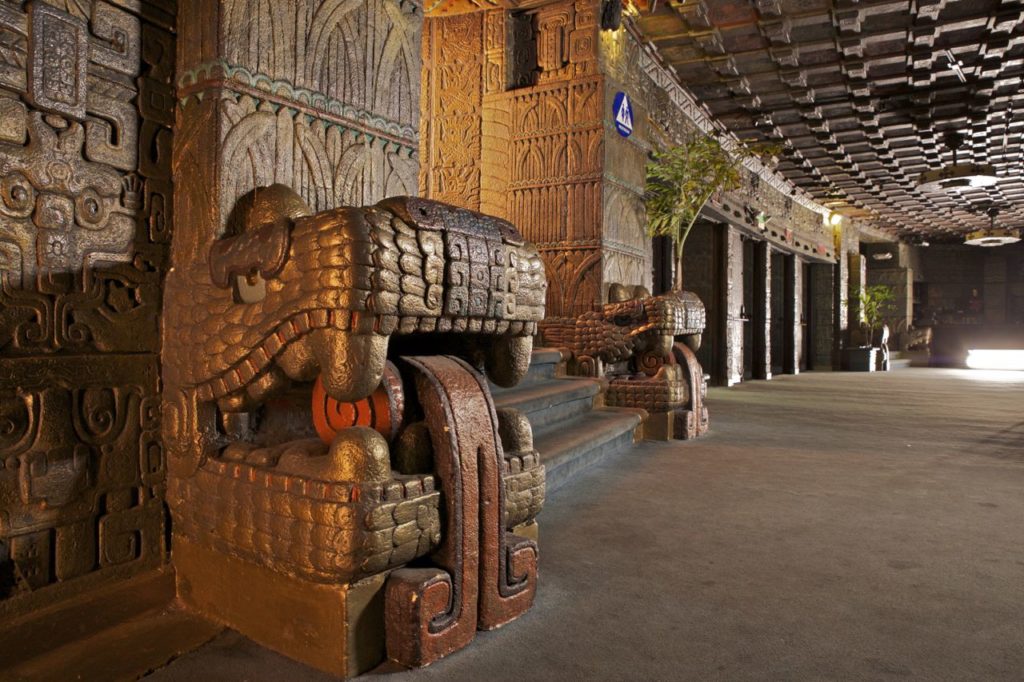
After that, my next book/exhibition project will be on American fraternal orders. They had some crazy visuals in their heyday. I am fascinated by 20th Century exoticism and how it all became obsolete in today’s world.
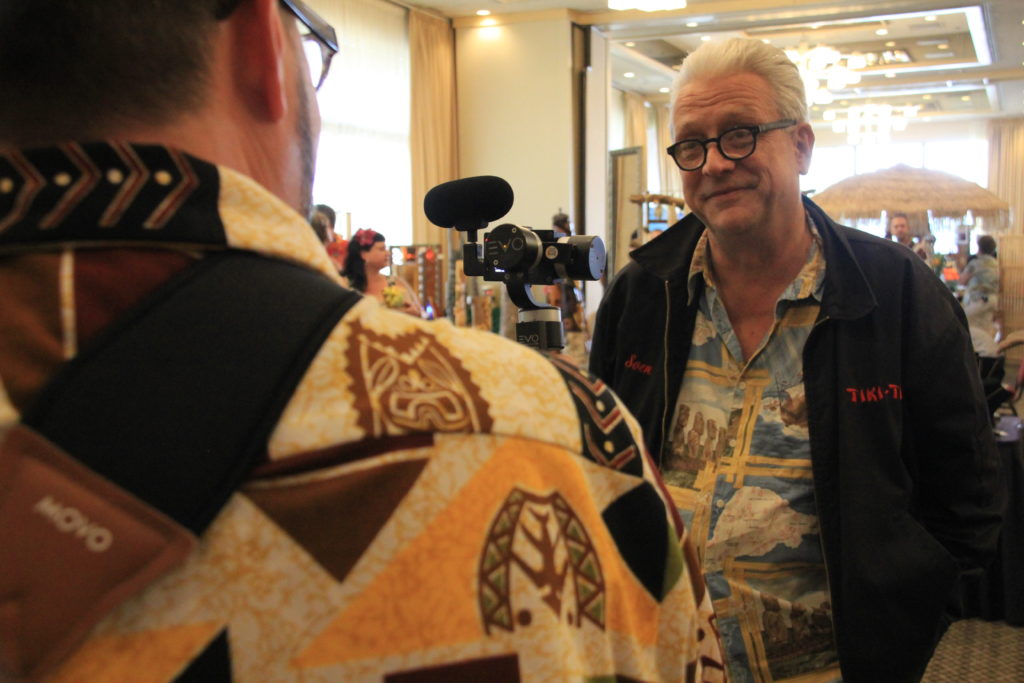
Anything else you would like to add?
Sven- Tiki is being assailed these days by a lot of cheap, bad renditions of it on one hand, and by not being understood by a young generation of social warriors on the other. It is ironic that what made it disappear the first time without being recognized as its own art form is rearing its narrow-minded head again. I believe Tiki is a resistance to the demystification and de-enchantment of life in today’s urban environment, and as such it stands for much more than itself, and we need to draw from it for sustenance.
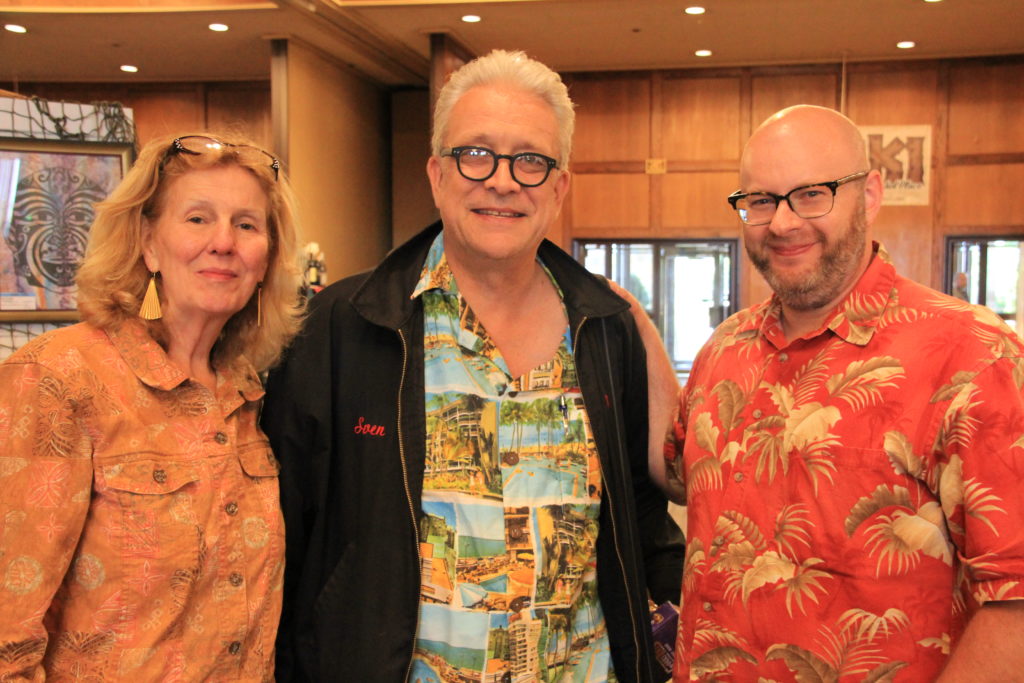
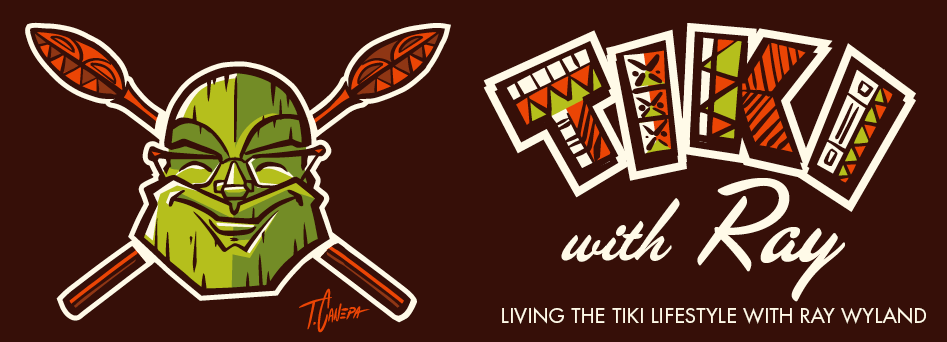
Pingback: THE ART OF TIKI Exhibition, Los Angeles, Oct 6-29th, 2017, – THE LOST WORLD, KATOOMBA